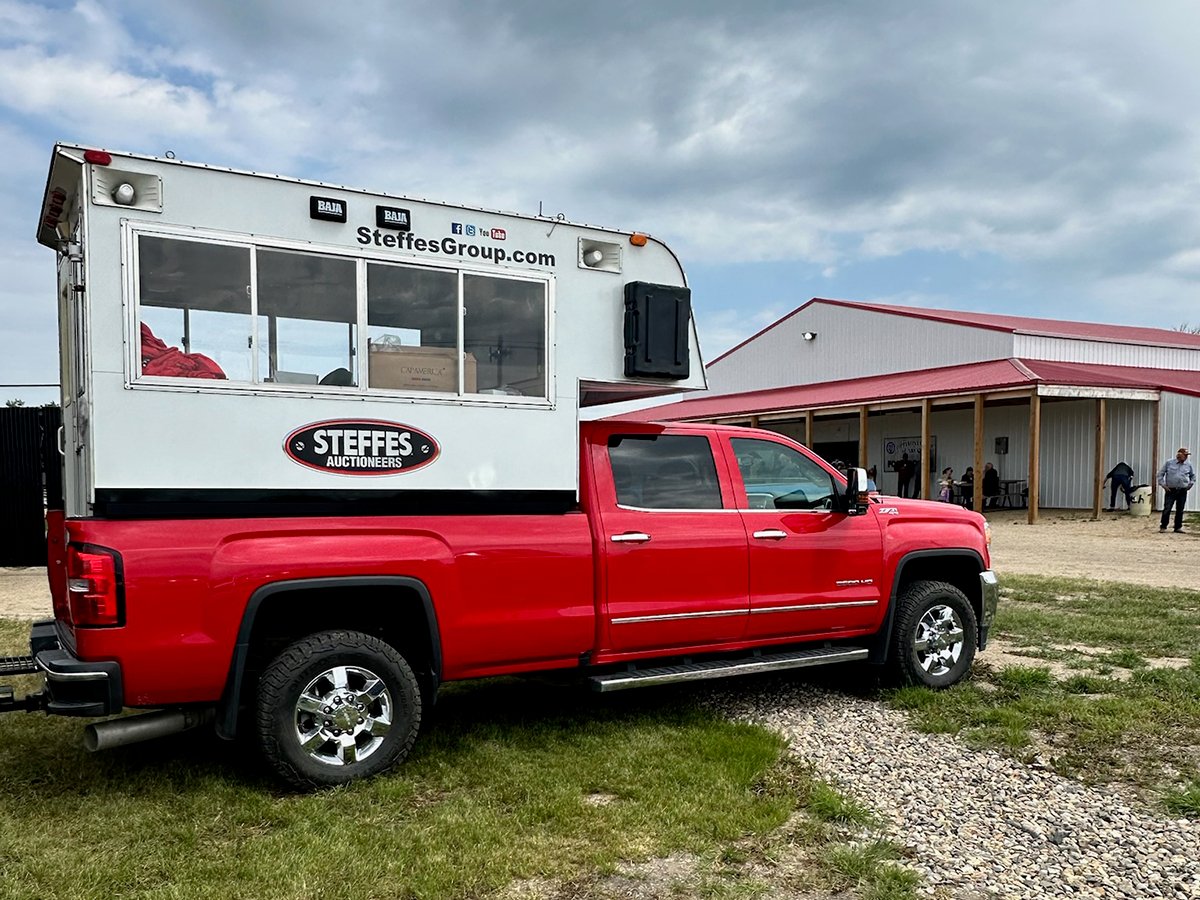HANNA, Alta. – They crawl, they talk, they smile, they frown.
All 4,000 faces confront visitors as they walk into the bright and colourful room at Violetta Link’s doll museum in Hanna.
People from all over the world have stopped in since the tearoom and museum were built on the eastern edge of town in 1993.
Link said the collection started when she and her daughter bought 1,400 dolls from a woman in Brooks, Alta., who had been saving dolls for 80 years.
“They were at our ranch. Everyone wanted to come to our basement and look at them so we decided to build when we moved to town.”
Read Also

Farm auctions evolve with the times
Times have changed. The number of live, on-farm auctions is seeing a drastic decline in recent years. Today’s younger farmers may actually never experience going to one.
Link continued to buy dolls, always from individuals rather than at auctions, but has now decided she has enough.
“I’ve got too many. When you’re full, you’re full.”
Her favourite doll is the one she was given as a child in 1942. There is a soft-bodied black golliwog doll from the 1920s, boudoir dolls with haughty expressions owned by women and dolls that were made to look like their child owners. There are dolls that feel like real babies that bring tears to the eyes of old women who hug them and saucy ones that are like adventurous friends. There are exquisite Japanese dolls made for looking at rather than playing with and robust walking dolls as big as a kindergarten child. And there are Barbies.
The oldest doll, from 1890, is a Minerva. It has a brass head and leather body. Mothers would customize it for their daughters by painting the face and making arms and an outfit.
Ninety percent of the dolls have their original clothes and 76 doll companies are represented in the collection. Link wouldn’t say how much the collection is insured for, but it is in the thousands of dollars. Some dolls are worth $1; some $1,000.
While the doll museum is closed from Dec. 22 to Feb. 22 each year, the tearoom is open from Wednesday to Sunday every week. Link gets up at 3 a.m. every day to bake the bread and pies that are on the menu.
Her daughter and another woman work in the tearoom serving homemade soups, sandwiches and buffet meals five days a week. Everything is made from scratch and Link said she doesn’t serve greasy food.
The tearoom caters for anniversary and birthday parties, and community events.
“There are lots of regulars. People serve themselves. There are no strangers around; everybody talks to everyone. It’s a very friendly town.”
Link isn’t sure how much longer she can keep up the pace. She and her husband Alec, who live in the back of the tearoom and museum building, have been married 51 years.
They have more than five acres and Alec raises Quarter horses that he sells to barrel racers.
Link jokes that she doesn’t even like tea and prefers coffee: “I say tea is for old maids and sick people.”














